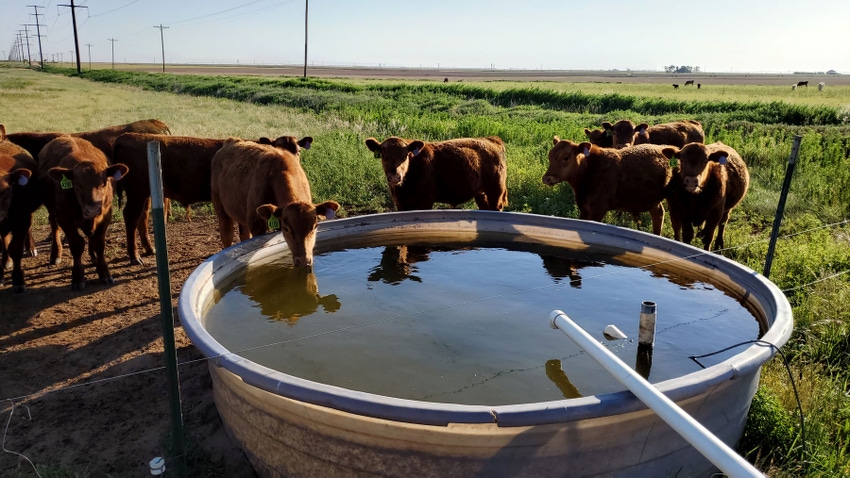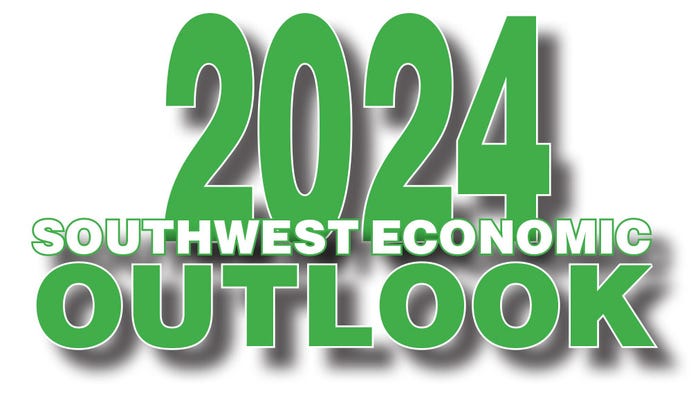
*This is the fourth article in our 2024 Southwest Economic Outlook series. Hear from Oklahoma State University and OSU Extension Service, and Texas A&M University and TAMU AgriLife Extension Service economists about the 2024 outlook.

2023 was quite a year in the cattle market. Record high calf and cattle prices were recorded in some markets during the year. Beef production declined from 2022’s record 28.3 billion pounds. Yet record high prices were not enough to induce cow herd expansion due to continued drought conditions and higher costs.
Keys to 2024
Beef demand remained surprisingly good in 2023 even with record high retail beef prices. Consumers continued to buy beef. Concerns about potential weakness in beef demand heightened in late 2023. Beef demand remains the biggest wild card for the New Year. Consumers continuing to buy beef will ensure higher cattle and calf prices. Some backing off of purchases may limit price gains even with tighter beef supplies.
Ranchers continued to cull cows in 2023 at a pace that pointed to more herd liquidation. Fewer heifers were retained in 2023 with more heifers placed in feedlots. Heifers were used to boost current beef production at the expense of the future. A key this year will be if herd rebuilding begins in earnest out of this year’s calf crop. If so, retaining heifers will lead to fewer calves for sale and dramatically boost calf prices. It’s worth remembering that record calf prices following the 2011-2012 drought didn’t occur until herd rebuilding kicked into high gear.
Much higher, in some cases record-high, calf prices in 2023, did not result in record-high net returns because production costs, including higher interest rates, are much higher than in the past. High production and financing costs have created little incentive to retain heifers thus far. Even higher calf prices will be needed to offset higher costs in order for herd rebuilding to really begin.
Reduced beef supplies will certainly be supportive of higher calf prices and cattle prices this year. Production in 2023 totaled about 26.7 billion pounds, down about 5.5% from 2022’s record. Beef production in 2024 is expected to decline another 6% from 2023, to about 25.1 billion pounds, the fewest pounds since 2015.
Other important factors
Beef trade will be an important issue in 2024. While the final data is not in yet, beef imports in 2023 are projected at an all-time record high of 3.7 billion pounds. Tighter beef supplies and high beef prices will continue to incentivize beef imports. That is especially true of the need for lean beef trimmings as the cowherd shrinks further. Beef exports dropped in 2023 from record levels in 2022. High beef prices will restrain beef exports in the coming year.
In the near term, increased placements led to more cattle on feed, year-over-year, late in 2023. That suggests a little more near-term cattle slaughter than was otherwise expected early in 2024. That short-lived boost in cattle and beef supplies has pressured prices, but it likely won’t last long.
A near-record corn crop harvested in 2023 pushed feed costs down and boosted calf and feeder prices. Lower corn prices are expected to remain in 2024, at least until the size of the next corn crop is known. This will provide some relief to feedlots who will face increasing challenges of limited feeder cattle supplies and high feeder cattle prices in the coming year.
Possible herd rebuilding
Tighter cattle and beef supplies will keep the pressure on for higher prices. Drought relief and higher prices may finally allow for some herd rebuilding which will really squeeze feeder cattle supplies and boost calf prices.
About the Author(s)
You May Also Like




